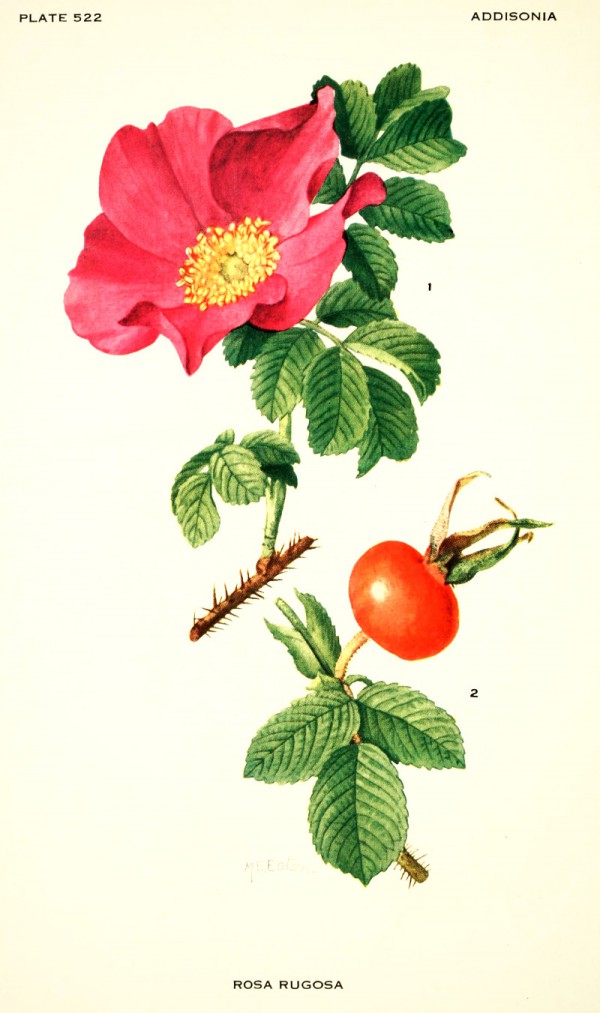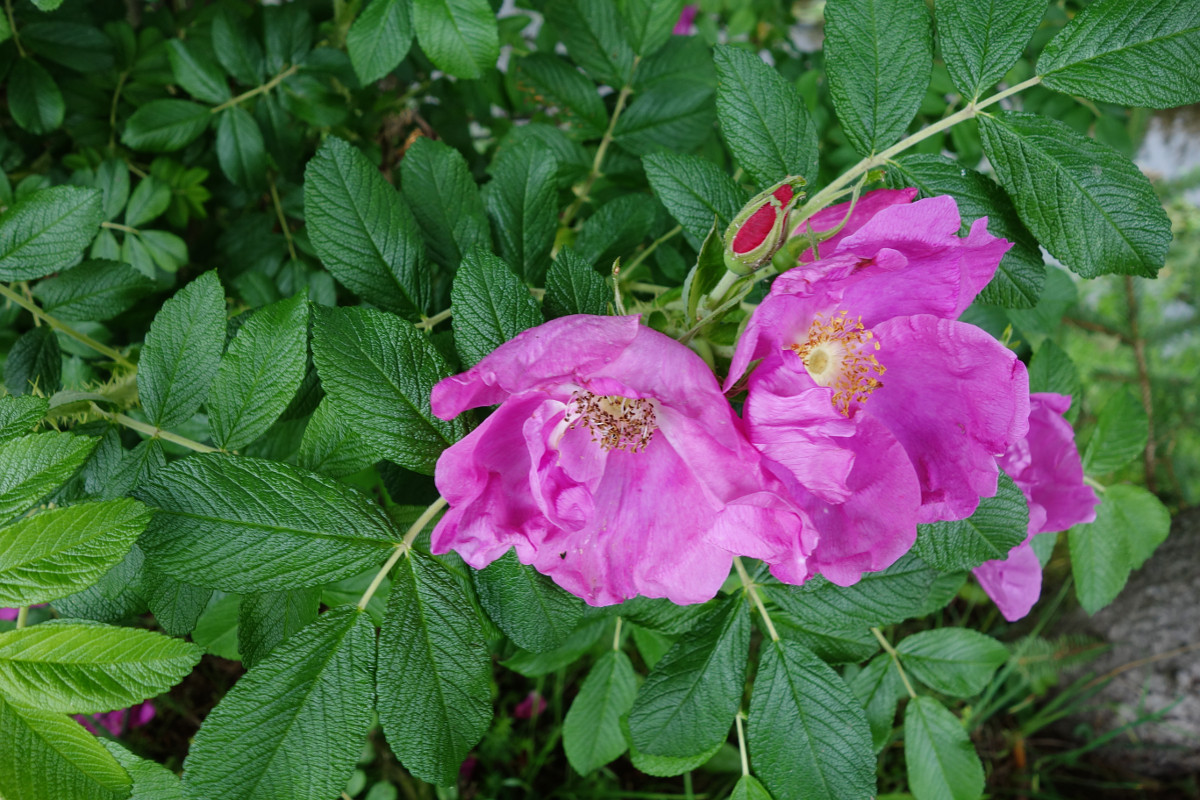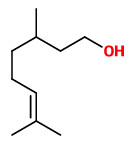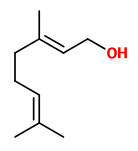Benutzer-Werkzeuge
Rosa rugosa Thunb. - Rosaceae - Japanese rose, Kartoffel-Rose, Apfel-Rose, Japan-Rose
Erect shrub, to 2 m tall, native rose to eastern Asia, as ornamental plant introduced to Europe and North America, it is naturalized in Europe and considered as an invasive species; leaves elliptic or elliptic-obovate, abaxially tomentose, serrate; flowers purple-red, dark pink, or white, mostly solitary, axillary, 4–5cm in diam.; hip dark red, depressed-globose, 2–2.5cm in diam.
http://www.efloras.org/florataxon.aspx?flora_id=2&taxon_id=200011310
„The sweetly scented flowers are used to make pot-pourri in Japan and China, where it has been cultivated for about a thousand years.“
http://en.wikipedia.org/wiki/Rosa_rugosa
The pulp of the dog rose hips rose provides jam, the remaining peel and seeds are dried and brewed to an aromatic tea.
http://de.wikipedia.org/wiki/Rosa_rugosa
Main components of the headspace of Rosa rugosa rubra flowers collected on Tenax were phenylethanol (53.9%), citronellol (16.8%), geraniol (5.6%), and phenylethyl acetate (2.1%). Minor components were e.g. benzaldehyde (0.6%), geranial (0.5%), nonanal (0.3%), decanal (0.2%), rose oxides (0.4%), and methyleugenol (0.6%).
[Flament, I., C. Debonneville, and A. Furrer. „Volatile constituents of roses: characterization of cultivars based on the headspace analysis of living flower emissions.“ chapter in: Volatile compounds from Flowers, Teranishi, R.;Buttery, R. G.;Sugisawa, H. Bioactive volatile compounds from plants. (Book) 1993, 269-281]
„Floral fragrance is mainly emitted from the petals. The major fragrance components are citronellol, geraniol and nerol, but more than 10 other monoterpenes have been found each of which constitutes more than 0.05% relative abundance (Georgiev et al. 1980; Hashidoko 1996). However, the composition of volatile compounds in different flower parts is clearly distinct. A significant part of the compounds is associated with anthers or pollen, including pollen kitt (Dobson et al. 1987, 1990). Thus, while the separate floral parts contribute differently to the whole-flower fragrance, each seems to play a distinct role in the partial processes of pollination, i.e. attraction of pollinators, signalling a food resource and guidance within the flower (Dobson et al. 1990). The compound methyleugenol, which is mainly located in the pollen, was shown experimentally to be an attractant of bumblebees, which are important pollinators.“
[Rosa rugosa Thunb. ex Murray., Bruun, H.H., Journal of Ecology, 93(2), 441-470, 2005] http://onlinelibrary.wiley.com/doi/10.1111/j.1365-2745.2005.01002.x/full
Main floral headspace compounds identified were ethanol (0.6-85.3 μg/g), n-hexane (1.4-18.2 μg/g), 2-phenylethanol (0.3-65.8 μg/g), β-citronellol (2.3-70.9 μg/g), citronellyl acetate (0.4-30.8 μg/g), nerol (0-17.5 μg/g).
[Comparative Analysis of Headspace Volatiles of Chinese Rosa rugosa. Li-Guo Feng, Chen Chen, Li-Xia Sheng, Ping Liu, Jun Tao, Jia-Le Su, Lan-Yong Zhao, Molecules 2010, 15, 8390-8399; doi:10.3390/molecules15118390]

Addisonia, vol. 16: t.522 (1931) [M.E. Eaton]
http://plantgenera.org/species.php?id_species=1263815

Rosa rugosa, CC BY-SA 3.0, Author: Andreas Kraska




